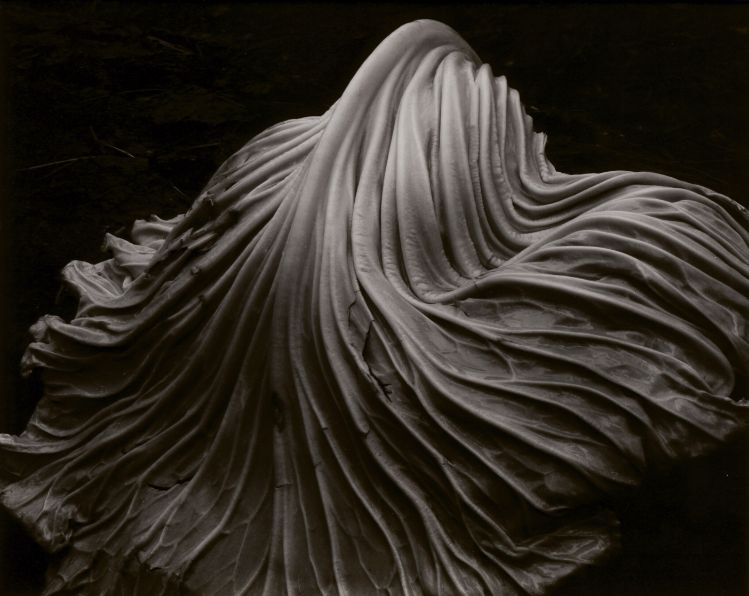Edward Weston was one of photography’s greatest pioneers, and perhaps the best-known American photographer of the twentieth century. Originally finding great success as a Pictorialist photographer, Weston spent his early years producing photographs that emulated paintings. The course of his career changed during a trip to New York in 1922, when he met the innovative photographer Alfred Stieglitz and was inspired by his Modernist approach. Shortly thereafter he travelled to Mexico with his student and lover, Tina Modotti, quickly becoming absorbed by the camera’s ability to capture, in sharp detail and often in arresting close-up, the precise textures of rock and cloud formations.
In Mexico, Weston developed a clear aesthetic that favoured contrast, pin sharp clarity and a full tonal scale. In 1926 he began producing the still lifes and close-ups of natural forms for which he is now best remembered. In 1929, he moved to Carmel, California, where he focused almost entirely on photographing monumental close ups of seashells, peppers and cabbages whilst also photographing the coastal landscapes of Point Lobos. In 1932, Weston became a founding member of Group f/64 along with Ansel Adams. Advocating un-manipulated, sharp-focused photography, the collective was named after the smallest aperture in the large format cameras they used, which ensured maximum sharpness in both foreground and background. Their clear-focusing lenses were the direct antithesis of the blurring and softening optics employed by the Pictorialist movement.
Although Weston and the other members of f/64 had a generally democratic approach to subject matter, no other still life object had such appeal and lasting power for Weston as the cabbage. Weston first began photographing arrangements with cabbage leaves in the summer of 1927 and would continue to photograph them in various forms and compositions until 1936.Writing in the early 1930s, he stated, “[the] cabbage has renewed my interest, marvellous hearts, like carved ivory, leaves with veins like flames, with forms curved like the most exquisite shell… in the cabbage I sense the entire secret of life’s force.”
This image is the most successful of Weston’s cabbage photographs and has become an icon of Modernist photography. In its simple but powerful composition it displays the key tenants held by the f/64 group. Using ‘straight photography’ as it became known, Weston depicts this everyday object with great precision, careful composition and a wide-ranging tonality. In his writings he stated that he aimed “to record the quintessence of the object or element before [his] lens, rather than an interpretation, a superficial phase, or passing mood.” Weston believed a photograph should be an uninterrupted, pure celebration of the subject’s natural beauty – a detailed and unaltered documentation of its essence. Without any camera trickery, he transforms the ordinary leaf into a sensuous and monumental form; its undulating surface feels full of movement and grace. Susan Sontag compared it to “a fall of gathered cloth.” The photograph demonstrates Weston’s extraordinary sense of texture, which he depicted with a superb richness of varying black-and-white tones
(By Thea Gregory)
